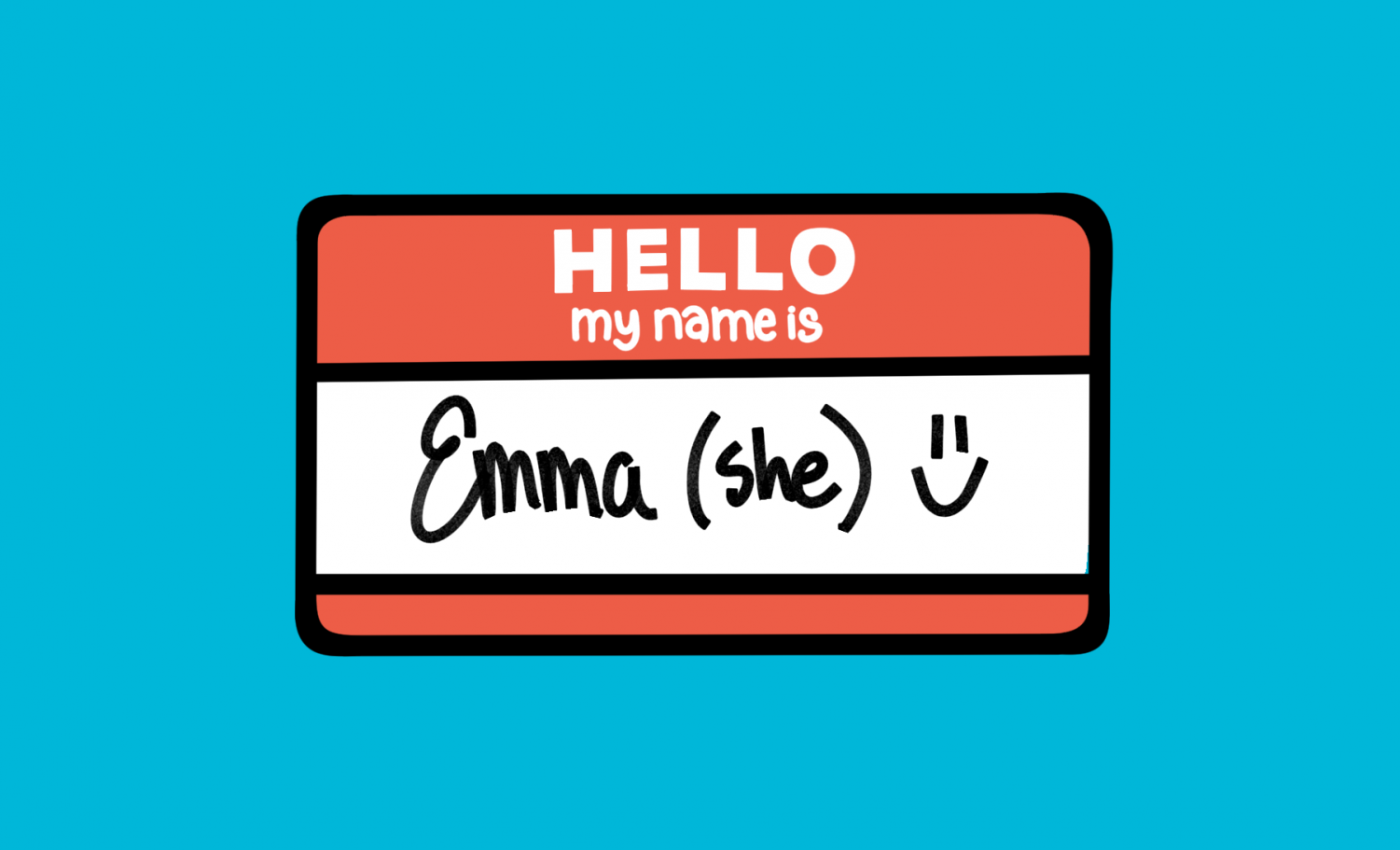Calling all genders: State your pronouns
December 14, 2020
Hello, my name is Emma and my pronouns are she, her, and hers.
I am cisgender, meaning that my gender identity and expression match the biological sex I was assigned at birth (female). I identify as the gender that I was assigned and with the pronouns that commonly correspond to that gender.
If you are cisgender like me, we can walk around without needing to identify or clarify our gender. We do not need to worry about how others refer to us based on how we are perceived (our appearances, actions). I never have to explain myself, worry about gender assumptions, or fight to be correctly identified. That is a privilege that those who are not cisgender don’t get to experience.
Gender is complex. And because it is so complex, it is freeing. People can identify how they feel most comfortable instead of exclusively conforming to the label of a man or woman. Rather than explaining how many genders there are with a strict number, look at it as an unlimited spectrum. As long as someone feels comfortable and true to themselves, there will be a gender definition for them.
Just a few examples of these identities are transgender, genderqueer, agender, bigender, fluid, third/additional gender in a cultural tradition, etc. A specific or permanent label isn’t always the case, since many identify as gender nonconforming, nonbinary, gender fluid, etc. With so many different genders and such a wide spectrum, many do not use pronouns that correspond with their gender expression (how the person dresses, behaves, or looks).
Gender pronouns are words used when referring to people. When people talk with or about me, the pronouns they would use are she, her, and hers. Other examples of pronouns are he/him/his, they/them/theirs, ze/zir/zirs, xie/hir/hirs, co/co/cos, and more.
While you might not know someone’s gender or pronouns right away, you should never resort to making an assumption. This assumption, more likely than not, may translate to others as harmful or ignorant. When others are referred to with the incorrect pronouns, whether it is intentional or not, it invalidates them. It disrespects them, alienates them, and dismisses their identity.
How can we avoid assumptions? First, we must work to normalize stating our pronouns when making introductions. This can be as simple as, “Hi, my name is Emma and my pronouns are she, her, hers, nice to meet you!” You can also put your pronouns in your Zoom name, your email signature, and your social media bios. Along with stating our pronouns, it’s just as important to normalize asking others: “Hi my name is Emma… my pronouns are… what’s your name and pronouns / what about you?” By asking others, you are taking a step to make them feel welcomed and important. While it might feel strange or uncomfortable to ask people their pronouns, it’s important to remember that it will be much more uncomfortable if you were to make a harmful assumption. Be respectful of any response you are given, whether they decline to share or they say pronouns you were not expecting.
This initiative of asking others their pronouns is especially important in the classroom. For many, high school is an environment and age when students’ eyes are opened to the complexity of gender, and they begin to find their own preferences and discover their identity.
In order to make classrooms a safe space, teachers need to respect students’ pronouns. During introductions, keeping in mind students’ pronouns is equally (if not more) important as their names. Both are aspects of their identity and give crucial insight into how they want to be identified. When you ask every student their pronouns, privately or in class as a voluntary option, you are showing them that your classroom is a safe place to be who they are, and encourages others to respect their classmates. Open up the option to state pronouns, but do not force students to share.
To be inclusive in the classroom, avoid constricting terms like Ms. or Mr. when referring to students (using someone’s name is a great and easy way to call on them or address them). Avoid “boys and girls” or “ladies and gentlemen”– “students”, “folks”, or “everyone” works. “Squad” is a fan favorite.
“I’m cisgender, and my pronouns are what you’d expect. Why should I need to say or share my pronouns?”
It doesn’t matter if you are cisgender, transgender, or an apple. (Ok, well maybe not an apple. But you get my point.) We all need to do our part to make the world more inclusive and normalize gender identities that are different from our own. By putting your pronouns in your Instagram bio, or saying them when you first meet someone, you are encouraging the norm of stating pronouns and showing everyone that gender identity should not be assumed. You are telling others that it is OK to be who you are.
Corrections? Don’t hesitate to comment down below or email me at [email protected].
